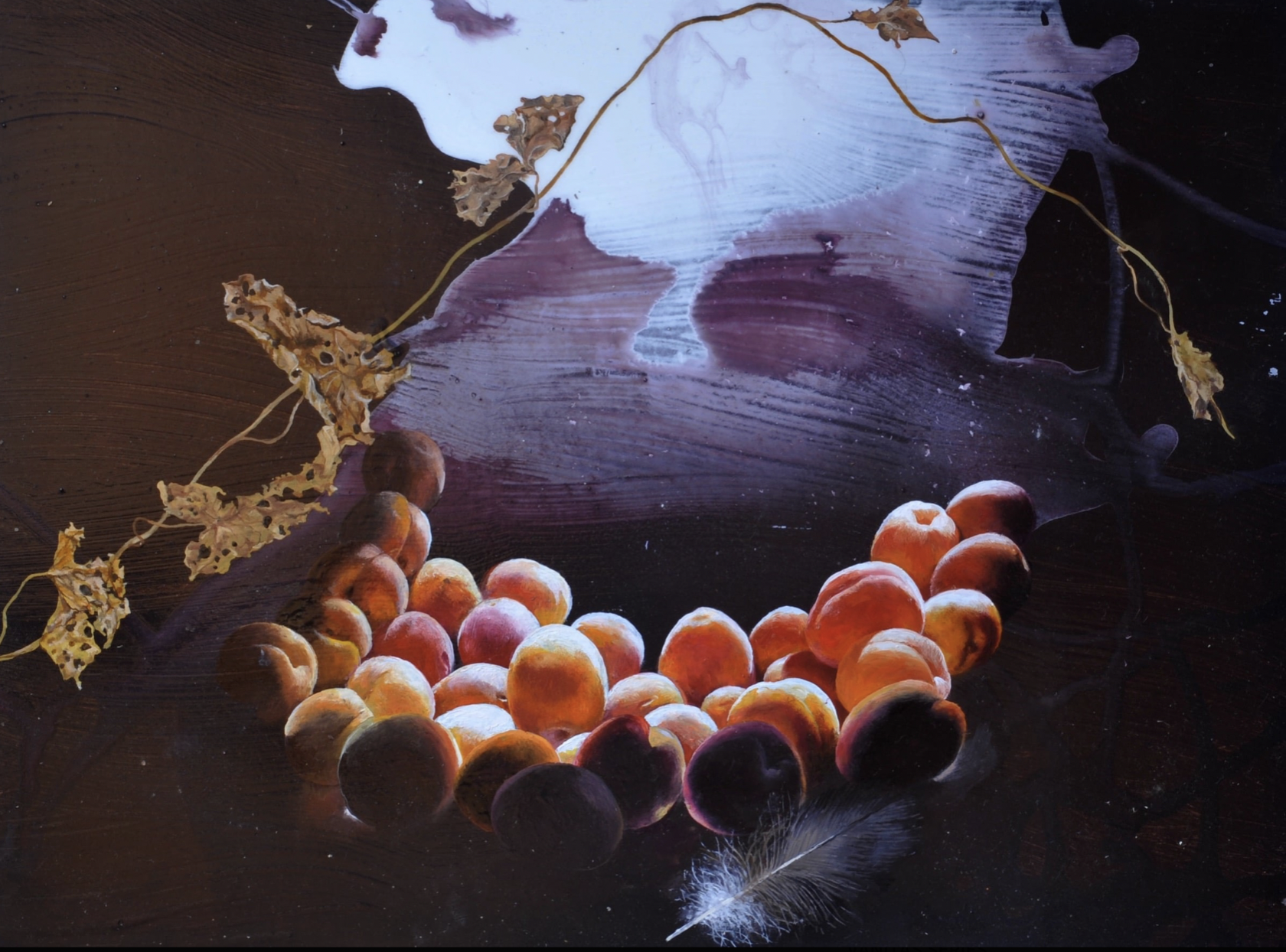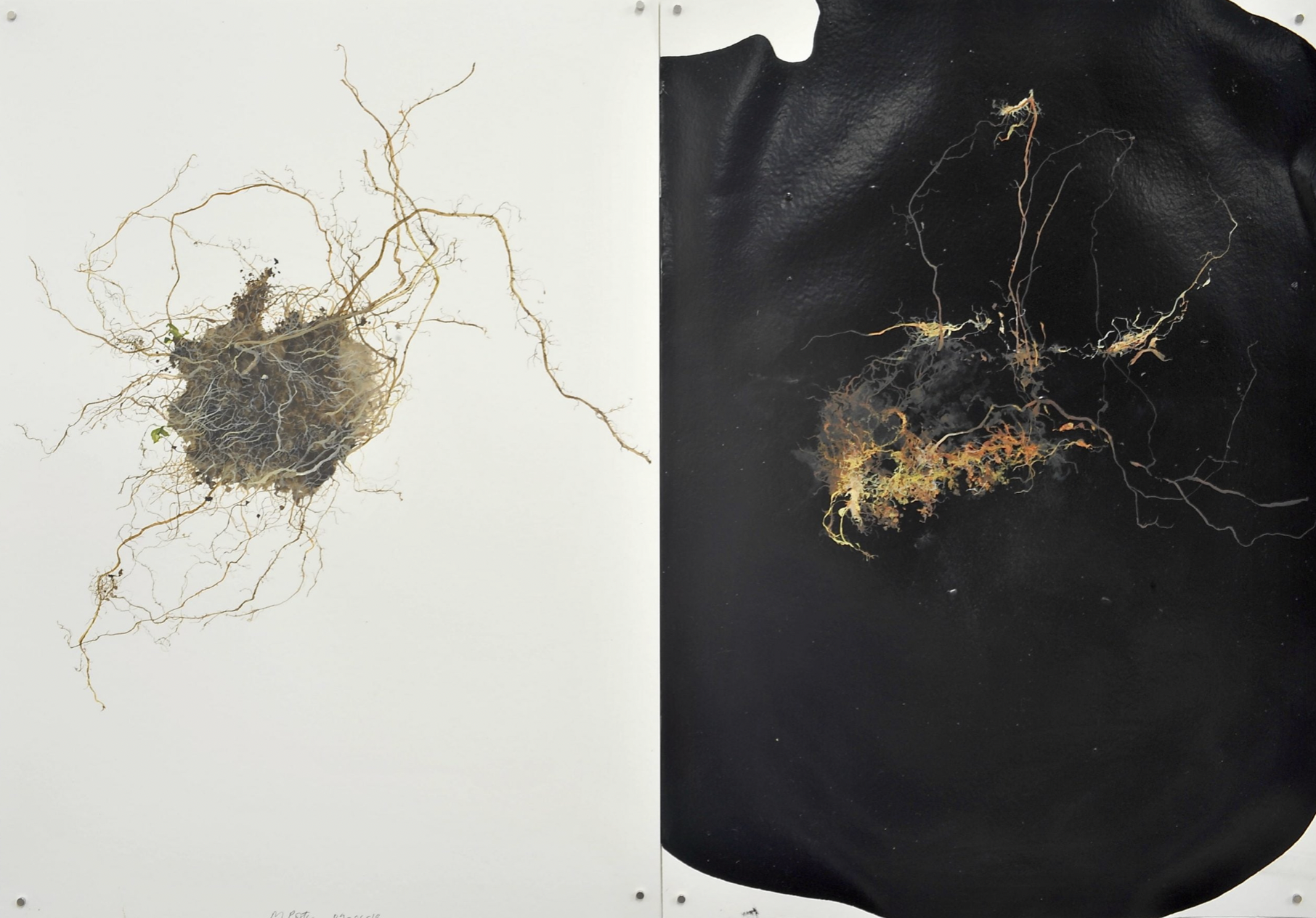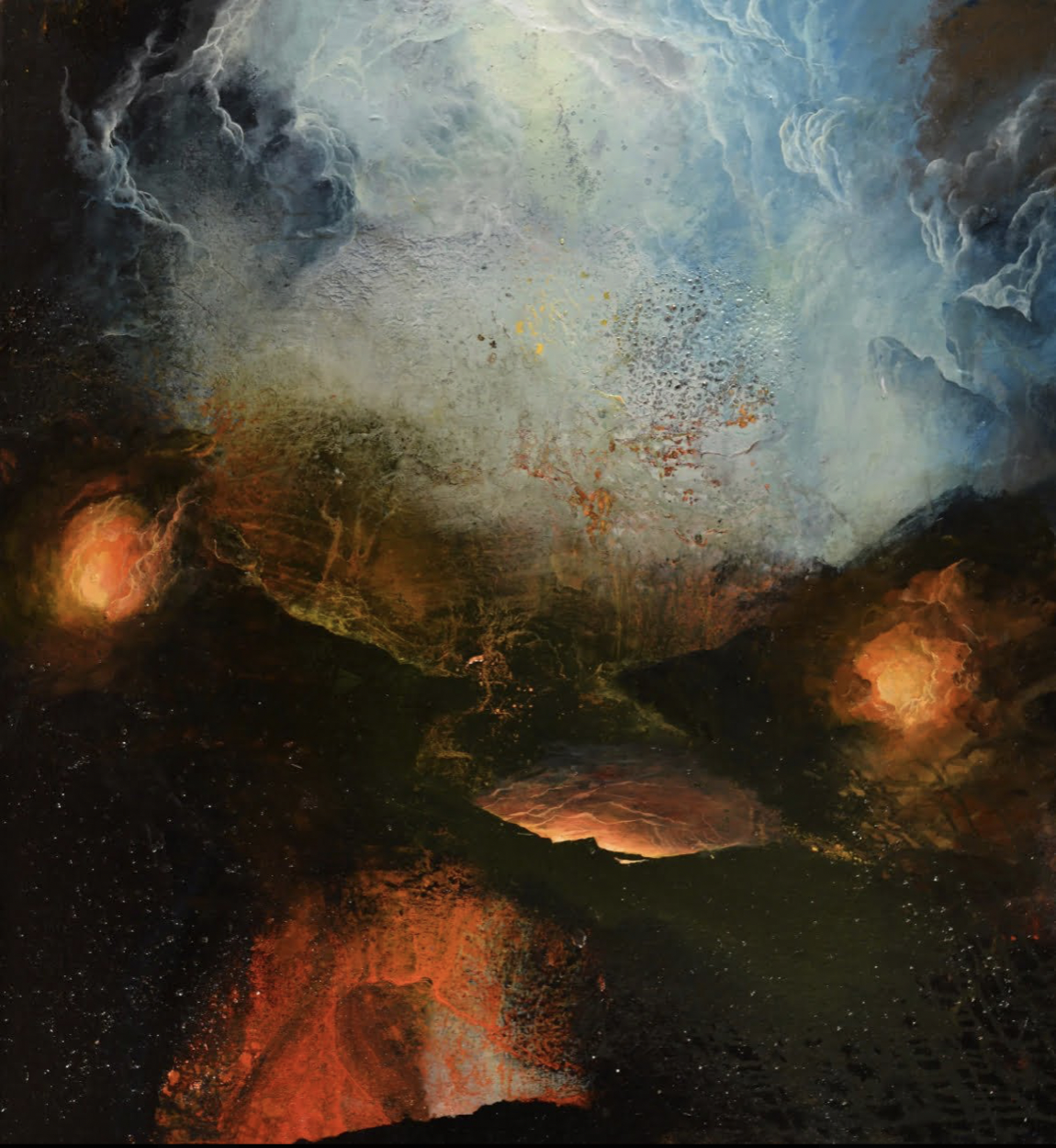Michael Porter
Artist Statement
Michael Porter’s artwork is transcendent. It has a majesty about it that commands the eye’s attention. Yet Porter does not limit himself to painting the vastness of the landscape, finding the minutiae of the earth, the grass, the leaves, the stones, and the dirt, just as important to the creation of transcendental place. He calls this ‘visual poetry’, using a broad description of the landscape amalgamated with a close depiction of its details; they are ‘different words in the same sentence’, as the artist eloquently puts it. The two elements working together to create a poetic experience.
The power Porter continually exhibits within his work is demonstrated to excess with his latest ‘Apocalypse’ series. These paintings feature a heavy chiaroscuro of fiery pits and clefts, billowing choleric cloud-mass, exploding dust clouds, and volcanic surges of burning paint. Although the paintings are dark and turbulent, there is still an intricate balance of space and light. Porter uses clear perspective points and atmospheric composition to draw the viewer into this land of darkness. These paintings were created out of anger. Porter explains he felt a building sense of exasperation at what was happening within the world: the ominous nature of the climate crisis and the blatant way governments have chosen to ignore it, the Brexit narrative, and in more recent months the apocalyptic feelings generated by the Coronavirus pandemic. These paintings, therefore, are both a release and a demonstration of the emotional tumult going on in many of our heads. They are both cathartic and spaces of political contemplation.
As has already been stated, Porter does not restrict his range to these vast emotional vistas, but microscopically attends to the detail of the landscape. In his ‘Dirt’ and ‘Vanitas’ series’ roots, dirt, grass stems, feathers, eggshells, and leaf skeletons are all ministered in the most lovingly technical way that produces mimeo-graphic perfection. The artist explains to me that these small details are part of the auspicious portrayal of place: ‘As artists, we are painting a description of the landscape, and this description lies just as much at our feet as it does up-ahead.’ As such, Porter is trying to describe a three-dimensional emotionally-mimetic experience. This does not mean topographical realism, far from it, rather the big and the small are nestled together, sometimes incongruously, to remind the viewer of a landscape they have experienced. When we visit these natural spaces, we look down just as much as up: we see things like pebbles, sticks, leaves or moss that make up the landscape just as much as the larger landmarks. Porter eloquently states: ‘When we see the world in front of our eyes, we imagine we see the whole scene instantly, we forget our eyes can only focus in a very limited way. Our brain, however, works so quickly and amalgamates all these separate pieces of information in a nano-second. I would like to emphasises that the world is made up of many different images that are continually changing.’
And so, in this language of fragmentation and recapitulation, Porter pushes the paintings beyond the physical landscape which inspired them. This leaves space for an emotional response in the viewer, for his paintings are ‘descriptions of the world’ but with added empathy. ‘The artist’ explains Porter, ‘gives to the world a description of itself which resonates with an audience; it has the power to deliver a unique viewpoint and for that viewpoint to be understood.’ Therefore, his paintings become possible kaleidoscopes of layered response. The viewer responding to the psychology of the painting itself, as well as seeing through their own experiences, and finally, applying memories and fantasies to this imagined space: the paintings becoming a pamphlet of poetic readings.
For more information: https://michaelporterart.com
‘‘The artist’ explains Porter, ‘gives to the world a description of itself which resonates with an audience; it has the power to deliver a unique viewpoint and for that viewpoint to be understood.’’







